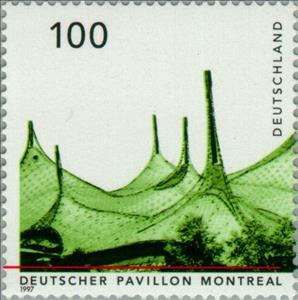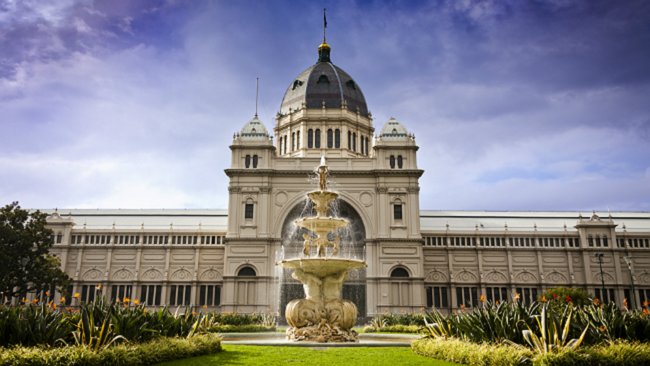Stamp: Architecture after 1945 (Germany, Federal Republic 1997)
Architecture after 1945 (Germany, Federal Republic 1997)
06 March (Germany, Federal Republic ) within release Architecture after 1945 goes into circulation Stamp Architecture after 1945 face value 100 German pfennig
| Stamp Architecture after 1945 in catalogues | |
|---|---|
| Michel: | Mi:DE 1909 |
| Yvert et Tellier: | Yt:DE 1741 |
Stamp is square format.
Also in the issue Architecture after 1945:
- Souvenir Sheet - Architecture after 1945 face value 400;
- Stamp - Architecture after 1945 face value 100;
- Stamp - Architecture after 1945 face value 100;
- Stamp - Architecture after 1945 face value 100;
- Stamp - Architecture after 1945 face value 100;
Stamp Architecture after 1945 it reflects the thematic directions:
A culture is a way of life of a group of people--the behaviors, beliefs, values, and symbols that they accept, generally without thinking about them, and that are passed along by communication and imitation from one generation to the next. Culture is symbolic communication. --the behaviors, beliefs, values, and symbols that they accept, generally without thinking about them, and that are passed along by communication and imitation from one generation to the next. Culture is symbolic communication.
Architecture (Latin architectura, from the Greek ἀρχιτέκτων arkhitekton "architect", from ἀρχι- "chief" and τέκτων "builder") is both the process and the product of planning, designing, and constructing buildings and other physical structures. Architectural works, in the material form of buildings, are often perceived as cultural symbols and as works of art. Historical civilizations are often identified with their surviving architectural achievements.
The Royal Exhibition Building is a World Heritage-listed building in Melbourne, Victoria, Australia, built in 1879–1880 as part of the international exhibition movement, which presented over 50 exhibitions between 1851 and 1915 around the globe. The building sits on approximately 26 hectares (64 acres), is 150 metres (490 ft) long and is surrounded by four city streets. It is at 9 Nicholson Street in the Carlton Gardens, flanked by Victoria, Carlton and Rathdowne Streets, at the north-eastern edge of the central business district. It was built to host the Melbourne International Exhibition in 1880–81, and then hosted the even larger Centennial International Exhibition in 1888, and the formal opening of the first Parliament of Australia in 1901. The building is representative of the money and pride Victoria had in the 1870s. Throughout the 20th century smaller sections and wings of the building were subject to demolition and fire; however, the main building, known as the Great Hall, survived.
A building or edifice is a structure with a roof and walls standing more or less permanently in one place, such as a house or factory. Buildings come in a variety of sizes, shapes and functions, and have been adapted throughout history for a wide number of factors, from building materials available, to weather conditions, to land prices, ground conditions, specific uses and aesthetic reasons. Buildings serve several needs of society – primarily as shelter from weather, security, living space, privacy, to store belongings, and to comfortably live and work. A building as a shelter represents a physical division of the human habitat (a place of comfort and safety) and the outside (a place that at times may be harsh and harmful).




